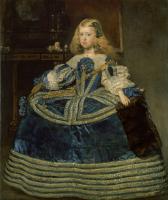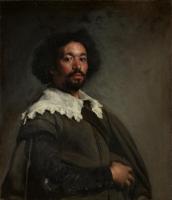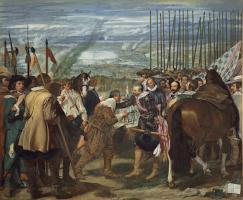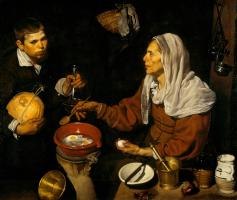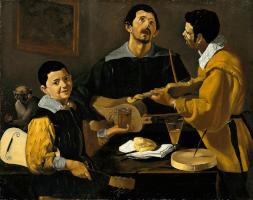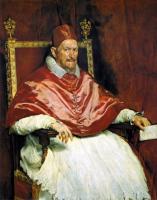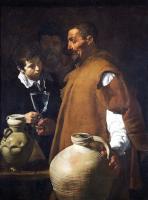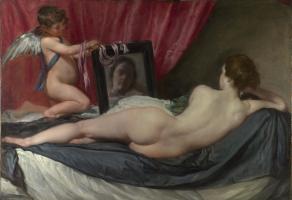Diego Velázquez
Diego Velázquez was born of Portuguese parents in the Spanish town of Seville. He trained in the academy of Francisco Pacheco, whose daughter he married, and by 1617 he had set up as an independent master. At the age of twenty-four he became court painter to Philip iv in Madrid, a position he held for the rest of his career. He was twice released for visits to the artistic centres of Italy (a necessary pilgrimage for any painter), which resulted most notably in a remarkable portrait of Pope Innocent x. Most of his work was bound by his court appointment, and his paintings of the Spanish royal family and the life of the court reveal an insight into human relationships that communicates beyond their own time and culture.
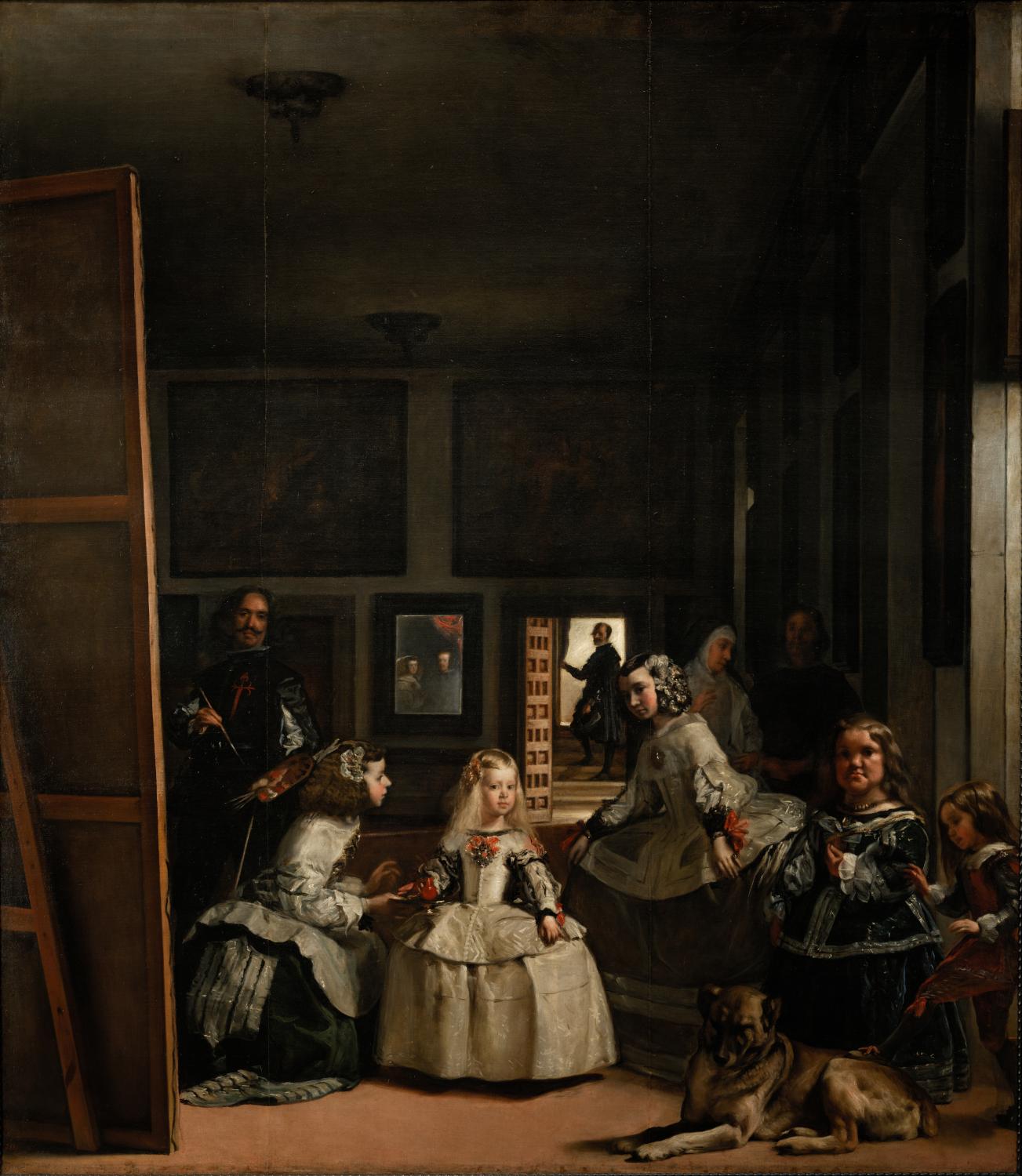 Las Meninas (the title is Portuguese and means Maids of Honour) was painted
towards the end of his life. Its audience would have been the royal family,
their courtiers and servants. Ingeniously mm Velázquez has included in the
composition a large portrait of the king and queen on which he is working,
which is reflected in a mirror at the back of the room. This device may have
been based on the reflection used by Van Eyck in The Arnolfi Marriage, which
was then in the Spanish Royal Collection.
Las Meninas (the title is Portuguese and means Maids of Honour) was painted
towards the end of his life. Its audience would have been the royal family,
their courtiers and servants. Ingeniously mm Velázquez has included in the
composition a large portrait of the king and queen on which he is working,
which is reflected in a mirror at the back of the room. This device may have
been based on the reflection used by Van Eyck in The Arnolfi Marriage, which
was then in the Spanish Royal Collection.
Standing beside the painter, and no doubt talking to the royal couple who are posing for him, is the Infanta Margarita Teresa, their flaxen-haired five-year-old daughter. She is surrounded by a retinue of maids of honour and dwarfs, playmates for the royal children, who provided Velázquez with unusual character studies.
Behind them, in a nun’s cowl, is the Infanta’s duenna (or chaperone) talking to a male attendant, and on a stairway at the back the superintendent of the old palace pauses to look through the open door. He is outlined against the brightly lit wall at the top of the stairs. In the room the shutters are closed against the brilliant sun, and the daylight falling on the figures in the foreground fades very gradually into shadow at the back, deepened by the greys and ochres of the pictures, ceiling and walls. The colours throughout the painting are limited to subtle, closely related tones, and they merge together in the silvery light.
The paint has been applied thinly with rapid brushstrokes, yet the result is detailed and accurate: there is a silky bloom on the young girls’ skin, and the artist has caught exactly the way the light gleams softly on their hair and their crinolines, and on the thick close fur of the dog.
 Hands and facial features are so finely observed and portrayed that they reveal
the relationship within the group superbly. In this work Velázquez achieved
perhaps his greatest heights in combining realism, atmosphere and insight into
character.
Hands and facial features are so finely observed and portrayed that they reveal
the relationship within the group superbly. In this work Velázquez achieved
perhaps his greatest heights in combining realism, atmosphere and insight into
character.
The Infanta Margarita Teresa — the charming central figure from Las Meninas — here seems remote and imprisoned by her formal court dress. Velázquez was instructed to paint regular portraits of the princess, which were sent to the Austrian court to record her growing up. She had been betrothed as a baby to Prince Leopold.
 This type of picture is known as a Bodegón, literally Spanish for ‘tavern’,
but generally meaning still-life based on a kitchen scene. All three objects
are strongly lit from the front and demonstrate a variety of surfaces and
textures. It is thought that Velázquez painted this as an advertisement for his
skills, and took it with him when we went to Madrid looking for patronage.
This type of picture is known as a Bodegón, literally Spanish for ‘tavern’,
but generally meaning still-life based on a kitchen scene. All three objects
are strongly lit from the front and demonstrate a variety of surfaces and
textures. It is thought that Velázquez painted this as an advertisement for his
skills, and took it with him when we went to Madrid looking for patronage.


